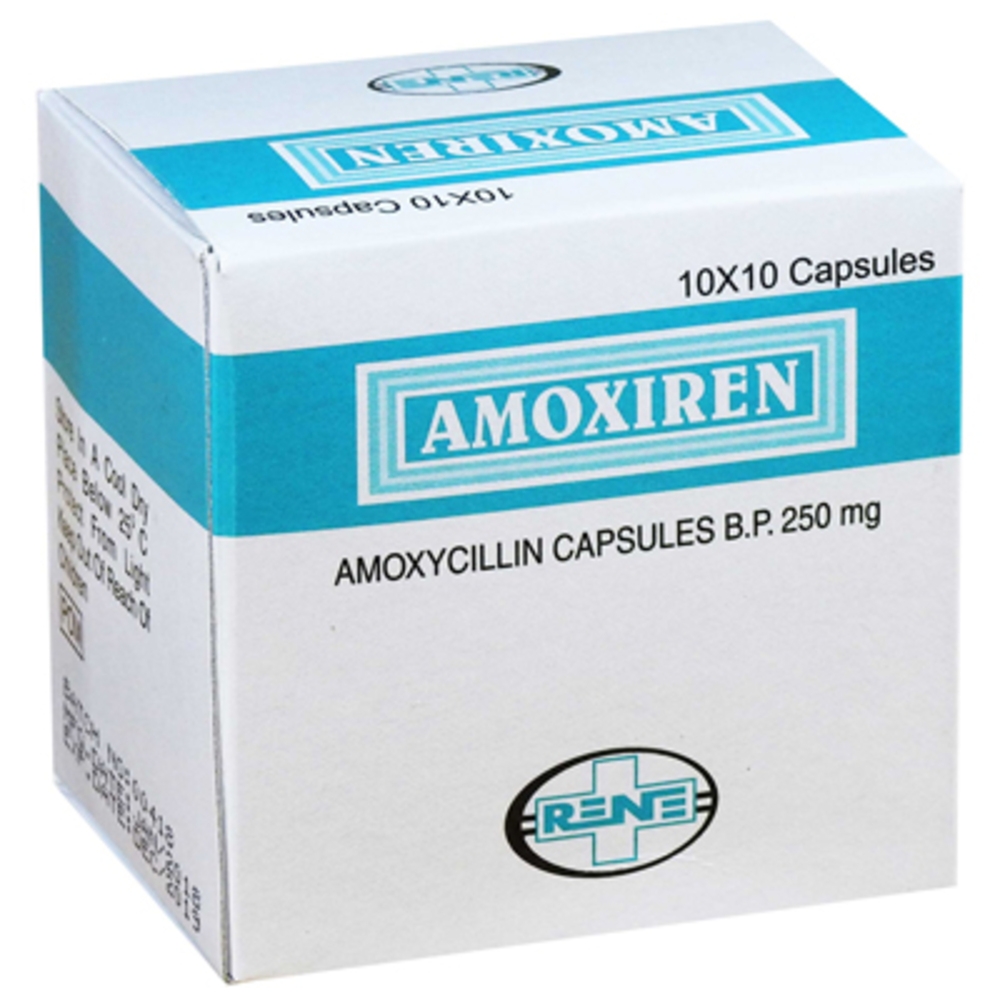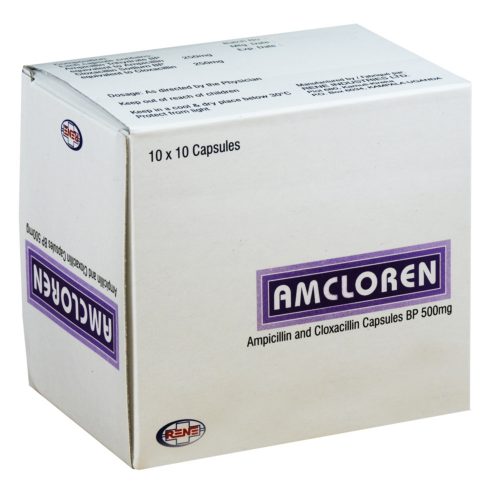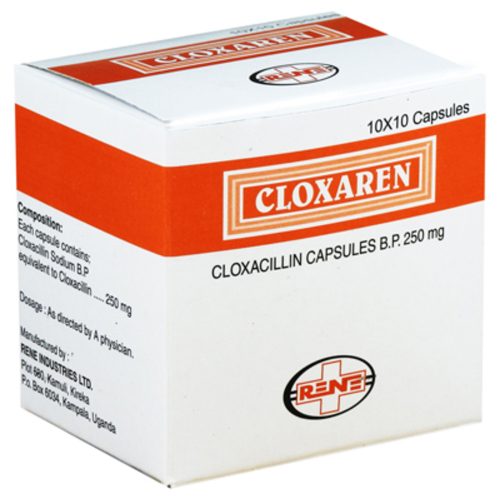AMOXIREN
COMPOSITION:
Each capsule contains Amoxicillin Trihydrate BP equivalent to Amoxicillin 500mg
PRESENTATION
Blister pack 10 x 10 Amoxiren capsules.
Description
INTRODUCTION:
Amoxiren (Amoxicillin) is the 4-hydroxy analogue of Ampicillin.
It has a broad – spectrum activity against a wide range of Gram-negative and Gram-positive bacteria.
MICROBIOLOGICAL ACTION:
Amoxiren (Amoxicillin) is active against a wide range of Gram-negative and Gram-positive bacteria including Streptococcus species, Staphylococcus species (penicillin sensitive), Haemophilusinfluenzae, Escherichia coli, Proteus mirabilis, Salmonella species, and Neisseria species.
MECHANISM OF ACTION:
Amoxiren (Amoxicillin) is a bactericidal agents. It acts by interfering with synthesis of the peptidoglycan layer of the cell wall, which normally protects the bacterium from its environment. Defective wall synthesis renders the cell incapable of with standing the osmotic gradient between the cell and its environment so that it swells and explodes.
PHARMACOKINETICS:
Amoxiren (Amoxicillin) is more completely and rapidly absorbed than Ampicillin and is reported to produce peak antibiotic plasma concentrations that are upto 2 ½ times as high as those from the same dose of Ampicillin. Peak plasma Amoxicillin concentrations of about 5Ug /ml have been observed 1 to 2 hours after a dose of 250mg, with detectabe amounts present for upto 8 hours. The presence of food in the stomach does not appear to diminish absorption significantly. Upto 20% is bound to plasma proteins in the circulation and plasma half-lives of about 1 hour have been reported. The half-life may be longer in neonates and the elderly because of incomplete renal function. Amoxicillin is widely distributed at varying concentrations in body tissues and fluids. Amoxicillin diffuses across the placenta, little appears to be excreted in breast milk.
Amoxicillin is metabolised to an extent to penicilloic acid, which is excreted in the urine. About 60% of an oral dose of Amoxicillin is excreted unchanged in the urine in 6 hours by glomerular filtration and tubular secretion.
INDICATIONS:
Amoxiren (Amoxicillin) is indicated in the treatment of a variety of infections due to susceptible organisms, including Respiratory tract infections, Ear Nose and Throat infections. Urinary tract infections, Gastro-intestinal infections, Gonorrhoea, Enteric infections, Meningitis, Septicemia, Biliary tract infections, infective Endocarditis, Skin and soft tissue infections, Peritonitis, syphilis and Dental abscess.
DOSAGE AND ADMINISTRATION
The usual adult oral dose is 250 – 500mg of the equivalent of anhydrous Amoxicillin three times daily depending on severity of infections. The recommended doses of Amoxicillin in specific diseases are as follows.
Typhoid and Paratyphoid:
Adult: 4g daily in divided doses for 14 to 21 days.
Children: 100mg/kg/day in divided doses for 14 to 21 days.
Typhoid carrier states:
3-4g daily in divided doses for minimum of 1 month.
Meningitis:
Adult: 150mg/kg/day in equally divided doses.
Children: 100-150mg/kg/day in equally divided doses
Respiratory tract infections: 3g twice in divided doses.
Uncomplicated Urinary Tract Infection: A single dose of 3g
Syphillis: A dose of 250mg every 6 hours. Duration of treatment varies from a period of 4 weeks upto 5 months according to the stage of the disease and the serological response obtained.
Gonorrhoea: The equivalent of 3g of anhydrous Amoxicillin administered simultaneously with 1g of Probenecid as a single dose.
Dental abscess: Two 3g doses at an interval of 8 hours.
CONTRAINDICATIONS:
Amoxiren (Amoxicillin) is contraindicated in patients with a history of allergic reactions of penicillins.
SIDE EFFECTS:
Side effects may include diarrhoea, indigestion or occassional rashes, either urticarial. An erythematous rash may be caused in patients with glandular fever, in which case it is advisable to discontinue treatment.
PRECAUTIONS:
Amoxiren (Amoxicillin) should preferably not be given to patients with infectious mononuclecsis since they are especially susceptible to Amoxicillin – induced skin rashes, patients with lymphatic leukemia and patients with hyperuricaemia being treated with allopurinol may also be at increased risk of developing skin rashes. Amoxicillin may decrease the efficacy of oestrogen containing oral contraceptives and it may also affect the absorption of other drugs due to its effect on the gastrointestinal flora.
STORAGE:
Store in a cool, dry place below 25O C.
Protect from light and moisture.
Keep out of reach of children.





